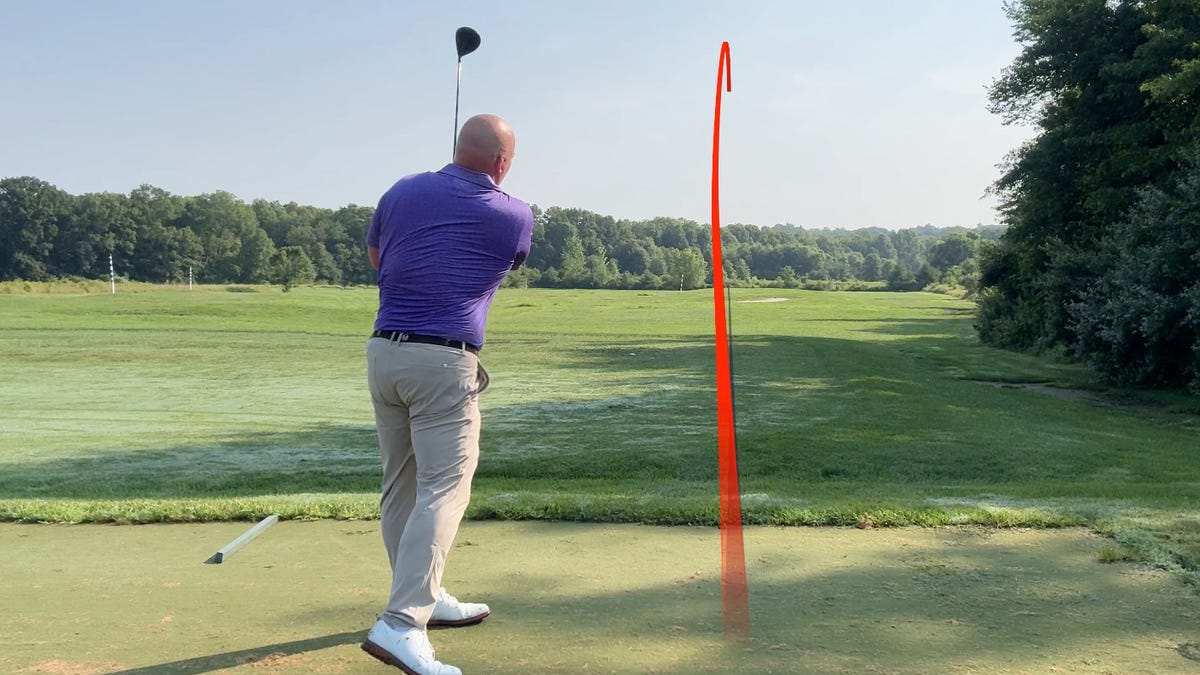After studying 6.5 million tee shots by men and women of all skill levels and ages, Arccos has some very interesting data on distance and accuracy.
Think you’re hitting the ball farther off the tee than you did a few years ago? Odds are, you’re not – and you’re not alone.
The trend of elite male golfers gaining distance over the past few decades was concerning enough to the United States Golf Association and the R&A that they announced in 2023 a plan to change how golf balls are tested starting in 2028 — essentially mandating balls that won’t fly as far.
But at the club level, distance is not a problem. In fact, according to a report released this week by Arccos Golf, nothing much has changed when it comes to distance for recreational players.
Arccos makes a shot-tracking system that collects performance data through small tags that screw into the ends of a player’s clubs and sync with a smartphone app. By pairing club usage with GPS and course maps, Arccos can determine how far shots travel, identify tendencies, and provide extensive on-course insights. Its database now includes more than 1 billion tracked shots by golfers around the world.
After analyzing more than 6.5 million driver swings on par 4s and par 5s from more than 25,000 golfers during the 2024 season, Arccos published its annual report on amateur driving performance. Some of the results were expected — but others may surprise you. Here are five takeaways from the 2025 Arccos Driving Distance Report.
1. You’re probably not hitting the ball farther than you did five years ago
Advancements in club fitting, swing instruction, and fitness science should, in theory, help players hit it longer. But the average driving distance for men has barely changed in recent years. According to Arccos, men averaged 224.0 yards in 2018 and 224.7 yards in 2024.
The numbers don’t factor in carry distance versus rollout, course conditions or weather, but the average has remained within a tight range — between 222.2 and 225.0 yards — since 2018.
For women, the trend was slightly negative: average distance dropped from 179.2 yards in 2018 to 176.2 yards in 2024.
2. With age, golfers get shorter — but straighter
Arccos divided players into seven age groups: 15–19, then each decade through age 70 and older. As expected, distance steadily declined with age across all handicap levels.
Men between 15 and 19 averaged 241.6 yards off the tee, the longest of any age group. That figure dropped to 208.6 yards for men in their 60s and 190.5 for men in their 70s.
But accuracy improved with age. Men in their 70s hit 56.5 percent of fairways, compared with just 39.0 percent for men in their 20s.
For women, the pattern held. Players in their 20s averaged 201.1 yards, while those in their 60s averaged 158.4 yards. However, women in their 60s hit 62.2 percent of fairways — 17.1 percentage points more than those in their 20s (45.1 percent).
In short: distance fades with age, but accuracy improves.
3. Low-handicap golfers are both the longest and the straightest
This might seem obvious, but the data underscores the point. The best recreational golfers are not only longer off the tee — they’re more accurate too.
Male golfers with a 0–4.9 handicap averaged 250.0 yards and hit 49.3 percent of fairways. Those with a 30-plus handicap averaged 184.9 yards and hit 40.6 percent of fairways. That’s a 65-yard difference and nearly a 9-point gap in accuracy.
The women’s data told a similar story — up to a point. Golfers in the 0–4.9 handicap group averaged 213.9 yards, compared with 140.5 yards for 30-plus handicaps — a difference of 73.4 yards. But accuracy didn’t vary much. The best players hit 56.5 percent of fairways, while the least accurate group (15.0–19.9 handicaps) hit 54.7 percent. So, for women, driving accuracy doesn’t appear to correlate strongly with handicap.
4. High-handicap golfers hit more truly bad drives
Arccos also analyzed “wayward” drives — defined as tee shots that result in either a penalty (e.g., out of bounds, lost ball, hazard) or force a recovery shot (like a punch-out).
Male golfers with a 0–4.9 handicap hit penalty drives just 4.4 percent of the time and needed to hit recovery shots only 7.6 percent of the time. That’s a total of 12.0 percent wayward shots.
But for higher-handicap players, the numbers climb sharply. Golfers with a 25.0–29.9 handicap had 38.2 percent of their drives result in either penalties or recovery shots. And for 30-plus handicaps, more than 45 percent of tee shots were classified as wayward.
5. Compared with men, women lose more distance with age
Men hit the ball farther than women in every age group, but they also retain more of their distance over time. According to Arccos, men in their 20s averaged 265.7 yards off the tee, while those in their 60s averaged 229.5 yards. That’s a loss of 36.2 yards — or 13.6 percent. Women, by comparison, dropped from 201.1 yards in their 20s to 158.4 yards in their 60s — a 42.7-yard loss, or 21.2 percent.
Group20s Avg. Distance60s Avg. DistanceYards LostPercentage LossMen265.7229.536.213.6Women201.1158.442.721.2
So not only do women lose more yards over the years, they lose a larger percentage of their original distance, according to the Arccos data.






